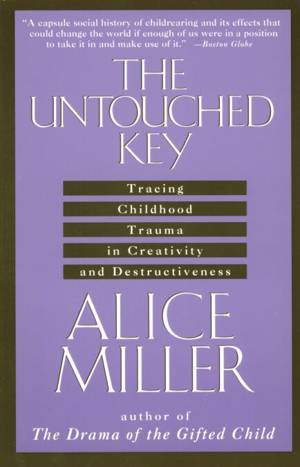
- Afhalen na 1 uur in een winkel met voorraad
- Gratis thuislevering in België vanaf € 30
- Ruim aanbod met 7 miljoen producten
- Afhalen na 1 uur in een winkel met voorraad
- Gratis thuislevering in België vanaf € 30
- Ruim aanbod met 7 miljoen producten
Zoeken
The Untouched Key E-BOOK
Tracing Childhood Trauma in Creativity and Destructiveness
Alice Miller
E-book | Engels
€ 8,06
+ 8 punten
Omschrijving
As in her former books, Alice Miller again focusses on facts. She is as determined as ever to cut through the veil that, for thousands of years now, has been so meticulously woven to shroud the truth. And when she lifts that veil and brushes it aside, the results are astonishing, as is amply demonstrated by her analyses of the works of Nietzsche, Picasso, Kollwitz, Keaton and others. With the key shunned by so many for so long - childhood - she opens rusty looks and offers her readers a wealth of unexpected perspectives.What did Picasso express in "Guernica"? Why did Buster Keaton never smile? Why did Nietzsche heap so much opprobrium on women and religion, and lose his mind for eleven years? Why did Hitler and Stalin become tyrannical mass murderers? Alice Miller investigates these and other questions thoroughly in this book. She draws from her discoveries the conclusion that human beings are not "innately" destructive, that they are made that way by ignorance, abuse, and neglect, particularly if no sympathetic witness comes to their aid. She also shows why some mistreated children do not become criminals but instead bear witness as artists to the truth about their childhoods, even though in purely intuitive and unconscious ways.
Specificaties
Betrokkenen
- Auteur(s):
- Uitgeverij:
Inhoud
- Aantal bladzijden:
- 192
- Taal:
- Engels
Eigenschappen
- Productcode (EAN):
- 9780307816924
- Verschijningsdatum:
- 8/05/2012
- Uitvoering:
- E-book
- Beveiligd met:
- Adobe DRM
- Formaat:
- ePub

Alleen bij Standaard Boekhandel
+ 8 punten op je klantenkaart van Standaard Boekhandel
Beoordelingen
We publiceren alleen reviews die voldoen aan de voorwaarden voor reviews. Bekijk onze voorwaarden voor reviews.








